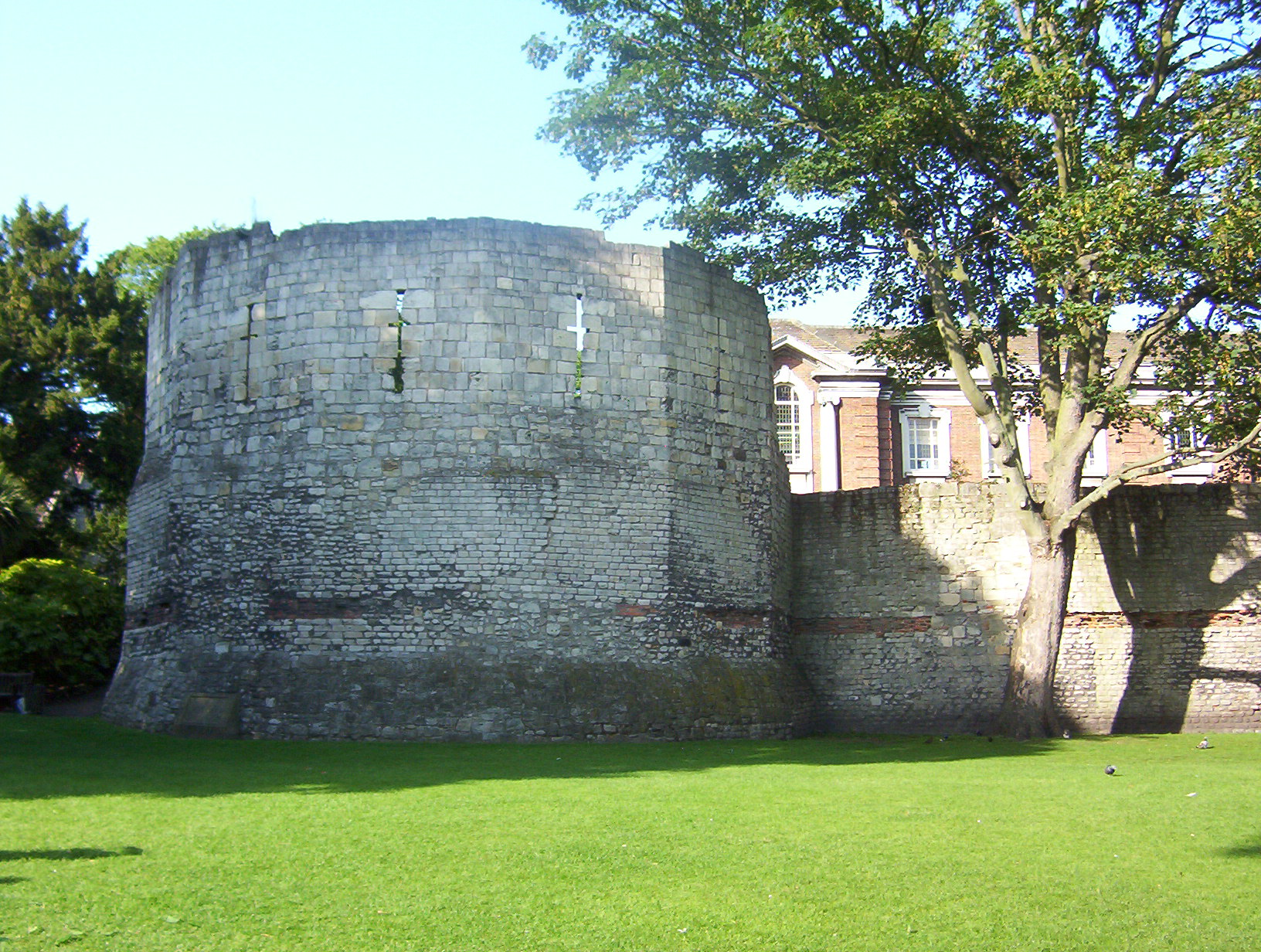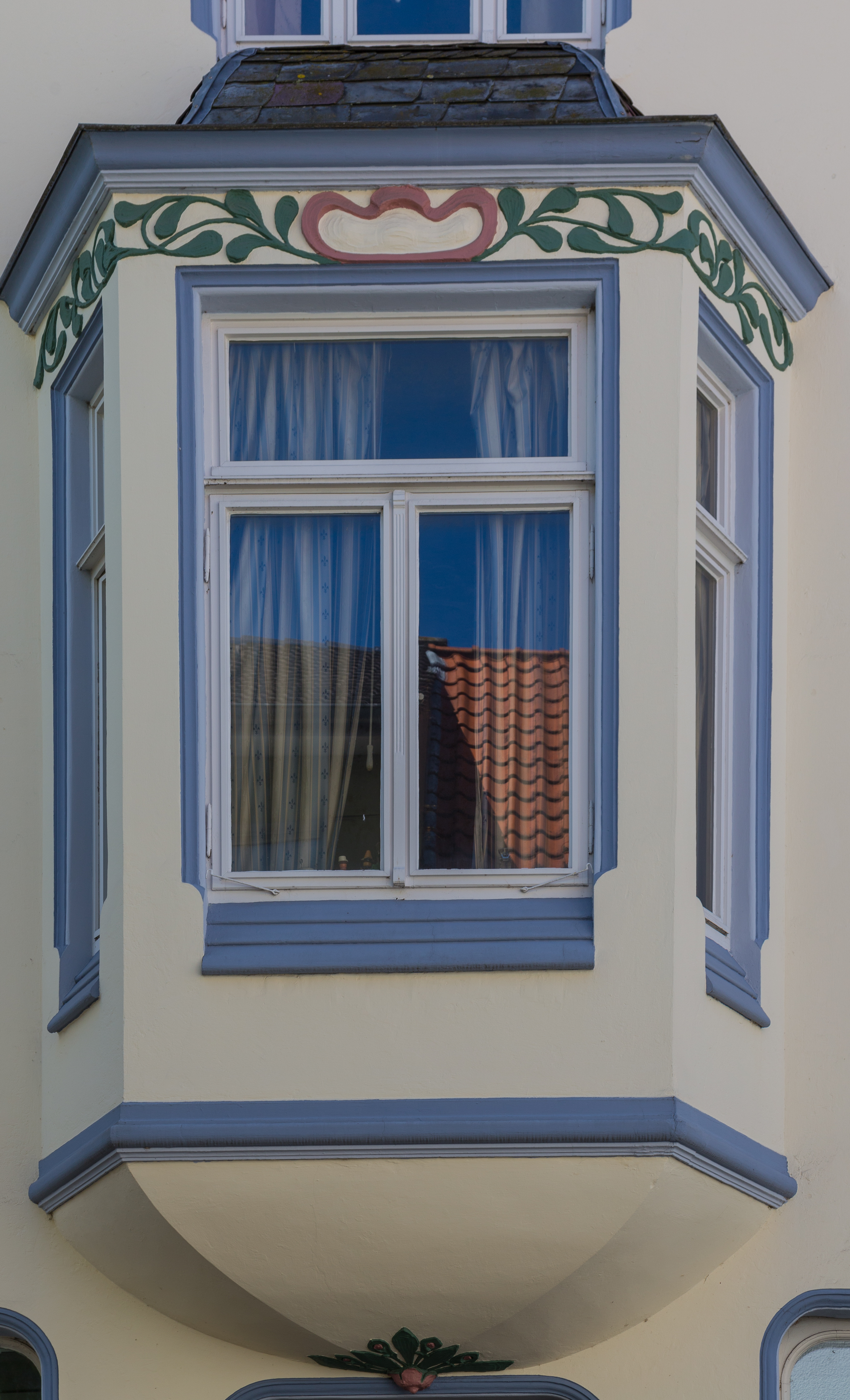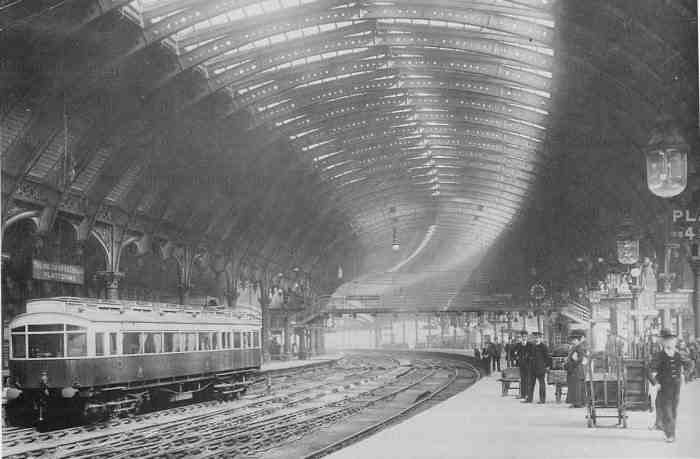|
Windmill Inn
The Windmill Inn is a pub on Blossom Street, immediately west of the city centre of York, in England. The oldest part of the pub is on the corner of Blossom Street and Queen Street, although until 1911 another building separated it from Queen Street. Dating from the late-17th century, it was constructed as two cottages and was probably part of reconstruction in the area following the Siege of York. This section is brick built, but with timber framed internal partitions. It contains early chimney breasts and a mid-18th century staircase, and the bay windows at the front date from 1785 or earlier, though they have been heavily altered. The building is first recorded as the "Windmill Inn" in a deed of 1735. At the time, it was owned by the Lee family, who had previously leased a windmill near the top of The Mount. Soon after the purchase, it was extended south along Blossom Street, and then in 1820 a further extension was added to the south, incorporating a carriage arch into ... [...More Info...] [...Related Items...] OR: [Wikipedia] [Google] [Baidu] |
Blossom Street
Blossom Street is a road in York, in England, immediately west of the city centre. History The street has been the main route leading south and west from York from the Roman Eboracum era onwards; the Roman roads to Calcaria (now Tadcaster) and Isurium Brigantum (now Aldborough, North Yorkshire) ran parallel to the modern road, to the rear of the buildings on its north-western side. While the area was initially agricultural, it was later used as a rubbish dump, and then as a cemetery. Remains of several tombs have been found. By the 5th-century, it appears to have been used as agricultural land once more. The street was first recorded in the early-13th century, as Ploxswaingate, named for the ploughswains living in the area, and by 1282, 29 plots along the street had already been built upon. Unlike other streets in Mediaeval York, it was extremely wide, and as a result, a horse and cattle market was held on it. By 1639, there were 68 houses on the street, and although there ... [...More Info...] [...Related Items...] OR: [Wikipedia] [Google] [Baidu] |
York
York is a cathedral city with Roman Britain, Roman origins, sited at the confluence of the rivers River Ouse, Yorkshire, Ouse and River Foss, Foss in North Yorkshire, England. It is the historic county town of Yorkshire. The city has many historic buildings and other structures, such as a York Minster, minster, York Castle, castle, and York city walls, city walls. It is the largest settlement and the administrative centre of the wider City of York district. The city was founded under the name of Eboracum in 71 AD. It then became the capital of the Roman province of Britannia Inferior, and later of the kingdoms of Deira, Northumbria, and Jórvík, Scandinavian York. In the Middle Ages, it became the Province of York, northern England ecclesiastical province's centre, and grew as a wool-trading centre. In the 19th century, it became a major railway network hub and confectionery manufacturing centre. During the Second World War, part of the Baedeker Blitz bombed the city; it ... [...More Info...] [...Related Items...] OR: [Wikipedia] [Google] [Baidu] |
Siege Of York
The siege of York in 1644 was a prolonged contest for York during the First English Civil War, between the Scottish Covenanter army and the Parliamentarian armies of the Northern Association and Eastern Association, and the Royalist Army under the Marquess of Newcastle. It lasted from 22 April until 1 July when the city was relieved by Prince Rupert of the Rhine. Rupert and Newcastle were defeated the next day at the decisive Battle of Marston Moor, and the siege resumed until the city was surrendered on easy terms on 16 July. Campaign Early years of the Civil War During the 17th century, York was often referred to as the "capital of the north" and sometimes as the "second city in England" (although Bristol had a larger population). It had great prestige as the seat of the Archbishop of York, and as the centre of much of the region's trade. When civil war broke out in 1642, the Royalists in Yorkshire were briefly besieged in the city, until the Earl of Newcastle ... [...More Info...] [...Related Items...] OR: [Wikipedia] [Google] [Baidu] |
Bay Window
A bay window is a window space projecting outward from the main walls of a building and forming a bay in a room. Types Bay window is a generic term for all protruding window constructions, regardless of whether they are curved or angular, or run over one or multiple storeys. In plan, the most frequently used shapes are isosceles trapezoid (which may be referred to as a ''canted bay window'') and rectangle. But other polygonal shapes with more than two corners are also common as are curved shapes. If a bay window is curved it may alternatively be called '' bow window.'' Bay windows in a triangular shape with just one corner exist but are relatively rare. A bay window supported by a corbel, bracket or similar is called an oriel window. "Rawashin" is a traditional and distinctive style of corbelled bay window in Jeddah, Saudi Arabia (e.g., as on the frontage of Nasseef House). Uses Most medieval bay windows and up to the Baroque era are oriel windows. They frequently ap ... [...More Info...] [...Related Items...] OR: [Wikipedia] [Google] [Baidu] |
The Mount (York)
The Mount is a street in York, in England, running south-west from the city centre. History The street has been part of the main route running south and west from York from the Roman Eboracum area onwards. The Roman road to Calcaria (now Tadcaster) and on to Londinium (London) ran immediately north-west of the current line of the street. Around the street, the area was used for burials and cremations. During the Mediaeval period, it the area was largely agricultural. In the 12th century, a chapel dedicated to Saint James was built on the street, near its current junction with Mill Mount, and in the 14th century, St Katherine's Hospital was constructed near the street's junction with Holgate Road. At the start of the English Civil War, an earthwork was constructed at what is now the street's junction with Albemarle Road. This saw service during the Siege of York, but was later levelled. It is believed that it the name of the street refers to this earthwork. In the late-17th ... [...More Info...] [...Related Items...] OR: [Wikipedia] [Google] [Baidu] |
York Railway Station
York railway station is on the East Coast Main Line serving the city of York, North Yorkshire, England. It is north of and on the main line it is situated between to the south and to the north. , the station is operated by London North Eastern Railway. York station is a key junction approximately halfway between London and Edinburgh. It is approximately north of the point where the Cross Country and TransPennine Express routes via Leeds join the main line, connecting Scotland and the North East, North West, Midlands and southern England. The junction was historically a major site for rolling stock manufacture, maintenance and repair. In ''Britain's 100 Best Railway Stations'' by Simon Jenkins, the station was one of only ten to be awarded five stars. History The first York railway station was a temporary wooden building on Queen Street outside the walls of the city, opened in 1839 by the York and North Midland Railway. It was succeeded in 1841, inside the walls, b ... [...More Info...] [...Related Items...] OR: [Wikipedia] [Google] [Baidu] |
Hostler
A hostler or ostler is a groom or stableman, who is employed in a stable to take care of horses, usually at an inn. In the twentieth century the word came to be used in railroad industry for a type of train driver. Etymology The word is spelled "hostler" in American English, but "ostler" in British English. It traces to c. 1386, meaning "one who tends to horses at an inn"—and also, occasionally, "innkeeper"—is derived from Anglo-French ''hostiler'' (modern French ), itself from Medieval Latin "the monk who entertains guests at a monastery", from ''hospitale'' "inn" (compare hospital, hospitaller, hospitality). A similar word, ''hostelero'' (innkeeper, the one that took care of a hostal), exists in Spanish. Modern uses According to the '' Dictionary of Occupational Titles'', a hostler in motor transportation is a type of truck driver A truck driver (commonly referred to as a trucker, teamster, or driver in the United States and Canada; a truckie in Australia ... [...More Info...] [...Related Items...] OR: [Wikipedia] [Google] [Baidu] |
York Press
''The Press'' is a local, daily, paid for, newspaper, for North and East Yorkshire. It is published in the City of York by Newsquest Media Group Ltd, a subsidiary of Gannett Company Inc. The ''Yorkshire Evening Press'' was established in 1882. It changed from broadsheet to compact format in 2004 and shortly afterwards dropped "Yorkshire" from the title. Morning printing began on 24 April 2006, and the paper was given its present name. William Wallace Hargrove printed at 9 Coney Street. Paper was delivered by barge Barge nowadays generally refers to a flat-bottomed inland waterway vessel which does not have its own means of mechanical propulsion. The first modern barges were pulled by tugs, but nowadays most are pushed by pusher boats, or other vessels. ... along the River Ouse. In 1989, publication moved to Walmgate. ''The Press'' has run campaigns including their ''Guardian Angels Appeal'' and ''Change It''. Circulation ABC print circulation for second half o ... [...More Info...] [...Related Items...] OR: [Wikipedia] [Google] [Baidu] |
Greene King
Greene King is a large pub retailer and brewer. It is based in Bury St Edmunds, Suffolk, England. The company owns pubs, restaurants and hotels. It was listed on the London Stock Exchange until it was acquired by CK Assets in October 2019. History The brewery was founded by Benjamin Greene in Bury St. Edmunds in 1799. In Richard Wilson's biographical analysis of the Greene family, he credits various family members for being able to achieve distinction in the worlds of business and banking, literature (Graham Greene, for example) and broadcasting in the nineteenth and twentieth centuries.' In 1836 Edward Greene took over the business and in 1887 it merged with Frederick William King's brewing business to create Greene King. Greene King has grown via mergers and acquisitions, including Rayments Brewery (1961), the Magic Pub Company (1996), Hungry Horse (1996), Morland Brewery (1999), Old English Inns (2001), Morrells (2002), a large part of the Laurel Pub Company (2004) ... [...More Info...] [...Related Items...] OR: [Wikipedia] [Google] [Baidu] |
Grade II Listed
In the United Kingdom, a listed building or listed structure is one that has been placed on one of the four statutory lists maintained by Historic England in England, Historic Environment Scotland in Scotland, in Wales, and the Northern Ireland Environment Agency in Northern Ireland. The term has also been used in the Republic of Ireland, where buildings are protected under the Planning and Development Act 2000. The statutory term in Ireland is "protected structure". A listed building may not be demolished, extended, or altered without special permission from the local planning authority, which typically consults the relevant central government agency, particularly for significant alterations to the more notable listed buildings. In England and Wales, a national amenity society must be notified of any work to a listed building which involves any element of demolition. Exemption from secular listed building control is provided for some buildings in current use for worship ... [...More Info...] [...Related Items...] OR: [Wikipedia] [Google] [Baidu] |



_(14798899263).jpg)


